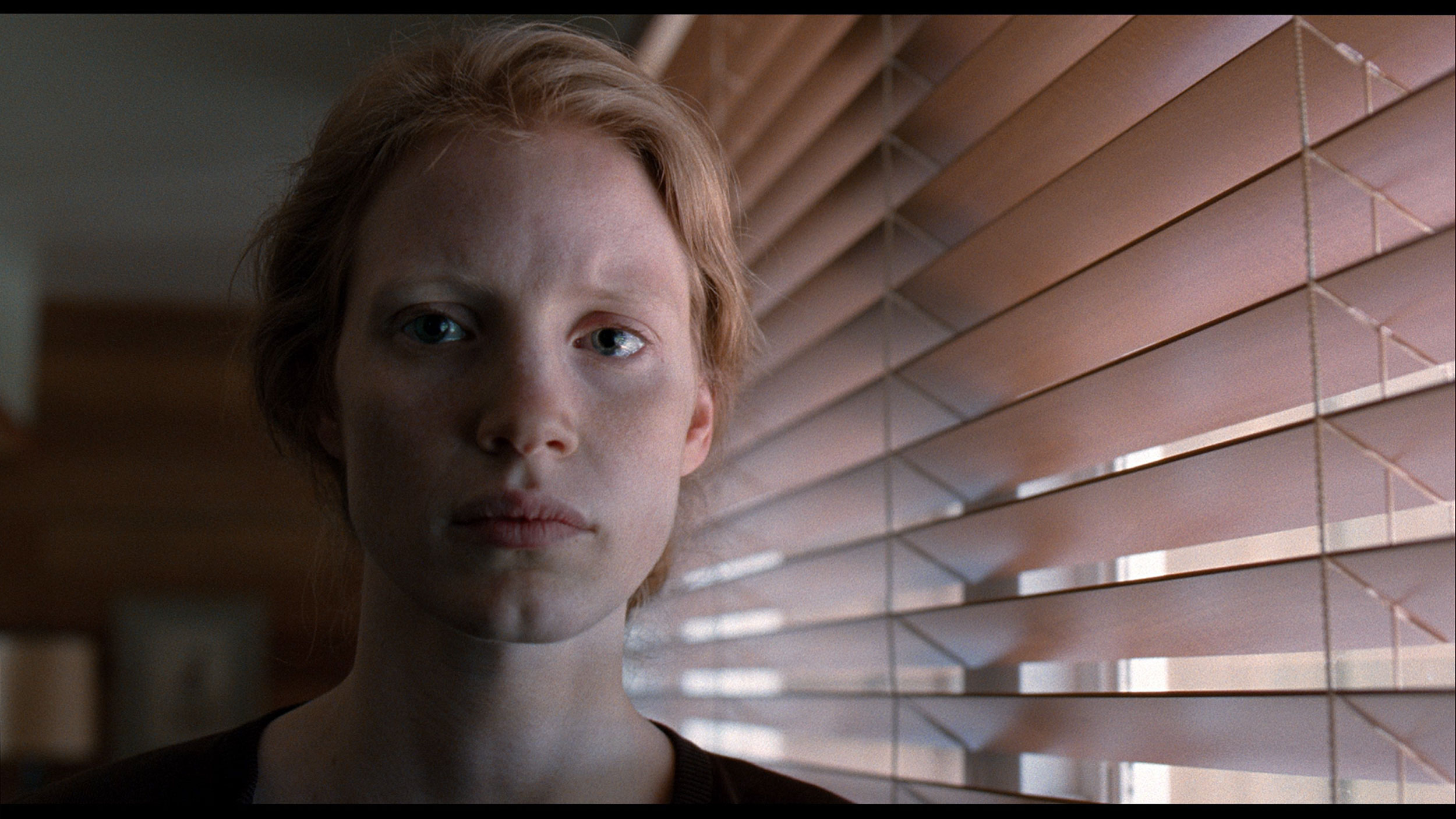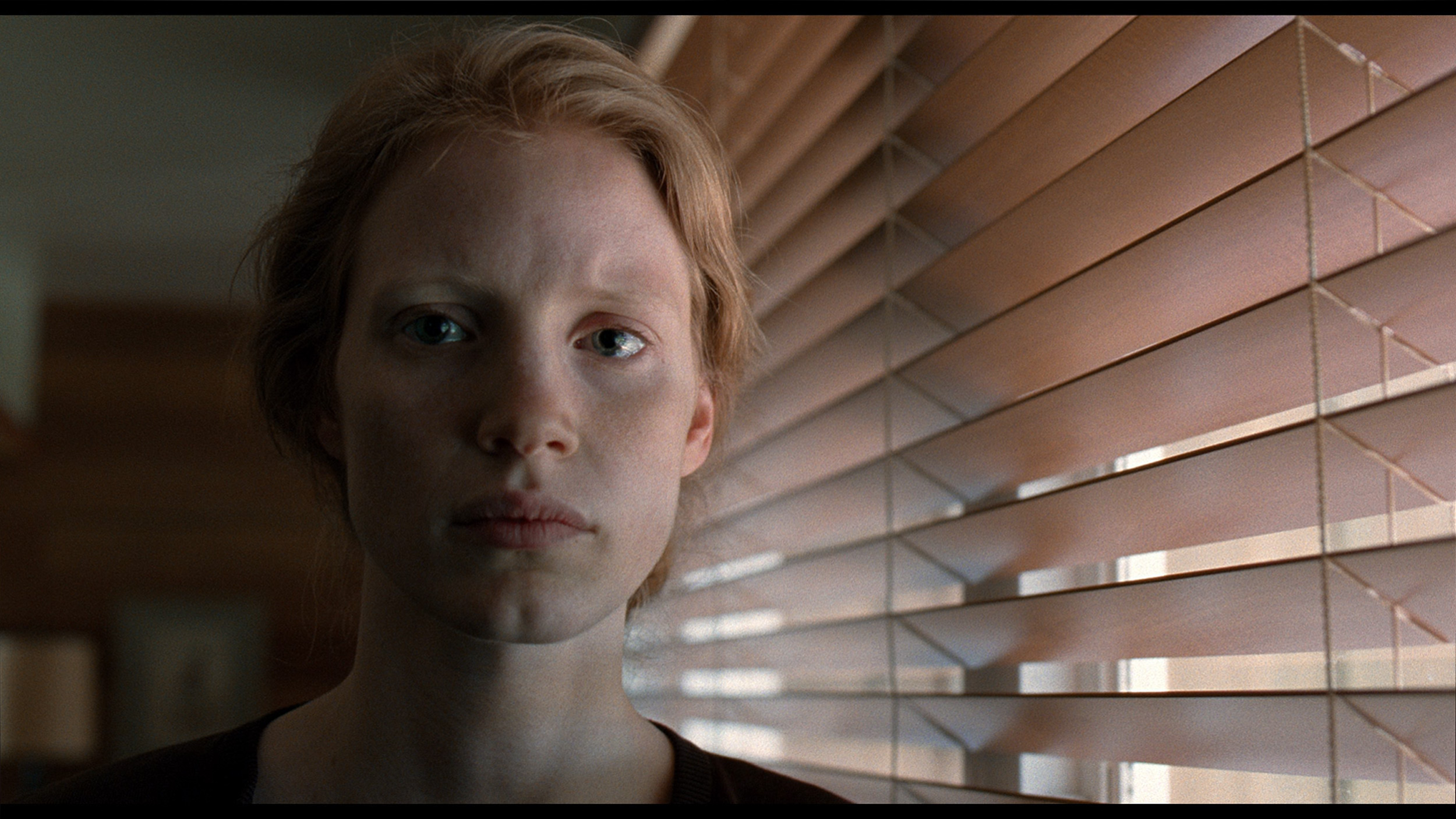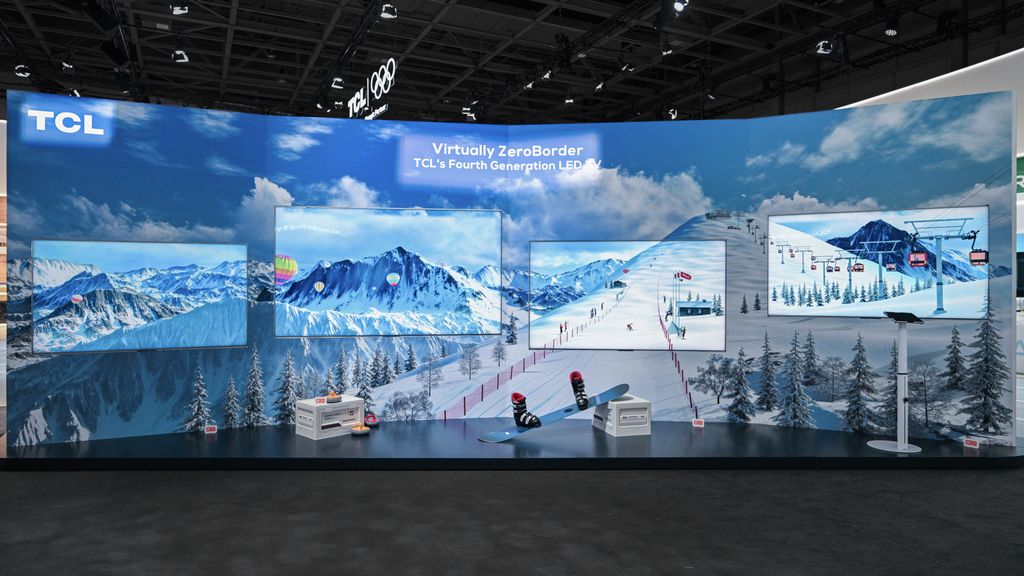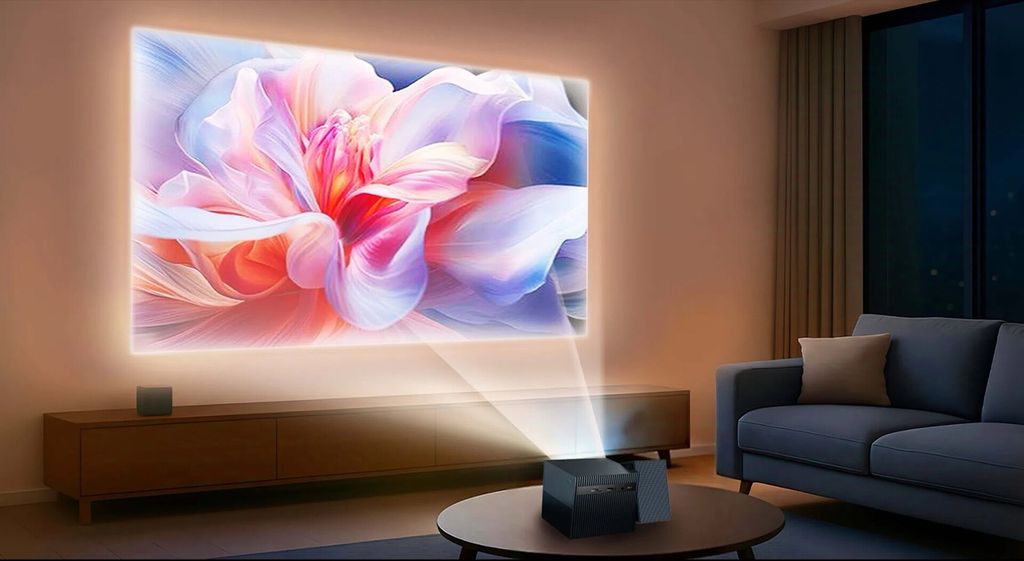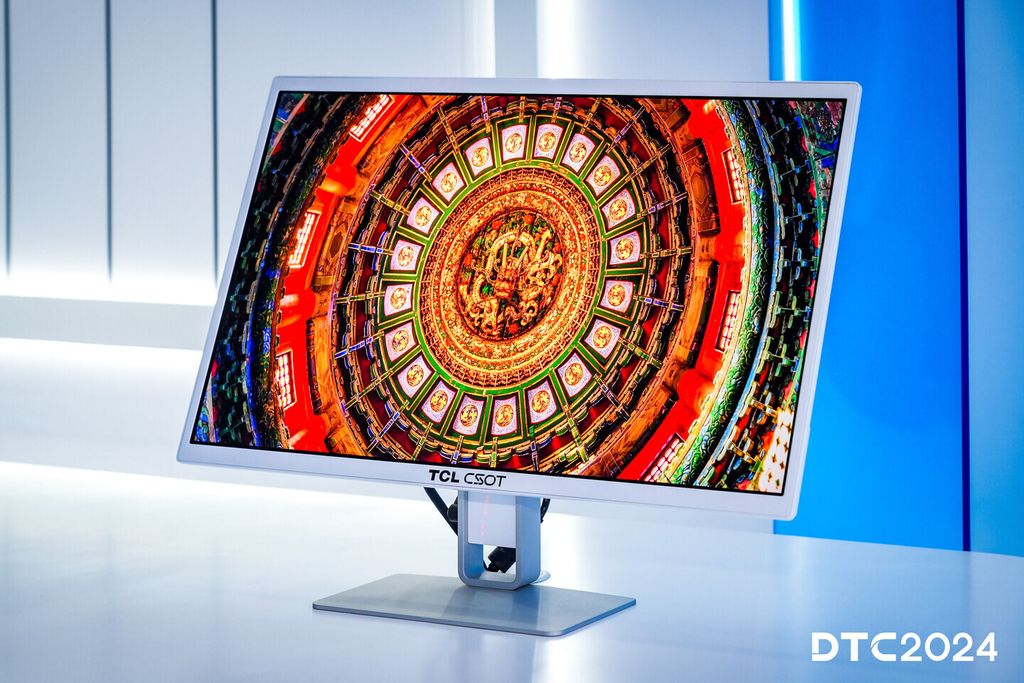- Matching (Score)
- Our verdict
- Competing TVs
- TV appearance
- Where to buy
- Contrast and black detail
- HDR effect quality
- Factory color reproduction
- Color reproduction after calibration
- Smoothness of tonal transitions
- Image scaling and smoothness of tonal transitions
- Blur and motion smoothness
- Console compatibility and gaming features
- Input lag
- Compatibility with PC
- Viewing angles
- Daytime performance
- TV features
- Apps
- Playing files from USB
- Sound
- Panel details
TCL P89K / TCL P8K Review
P8K / P89K
Available screen sizes:
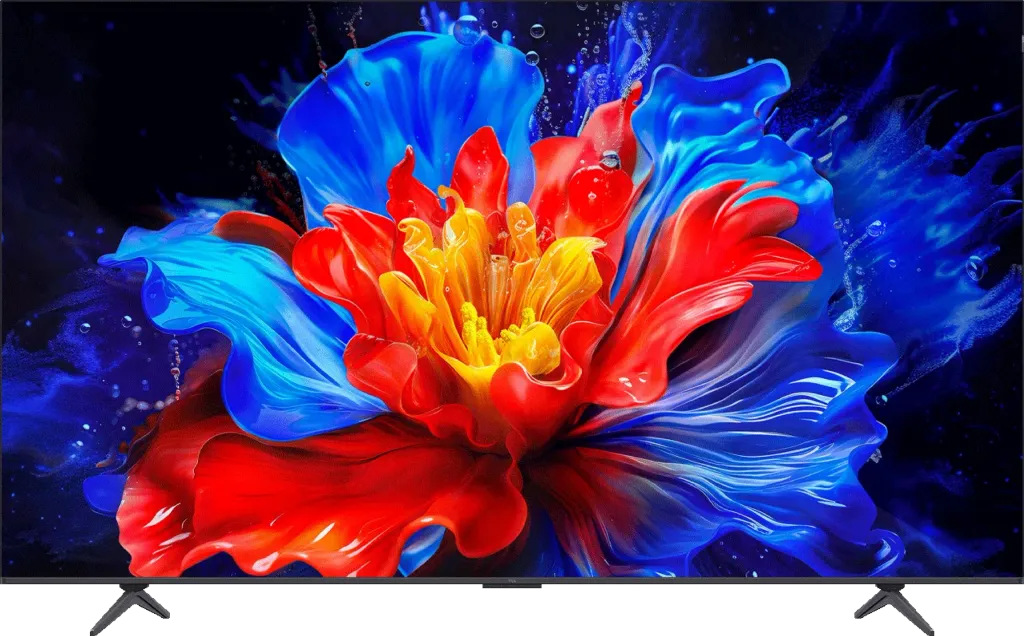
Complete the survey to find out the result
Panel type: LCD VA Refresh rate: 144Hz Brand: TCL Resolution: 3840x2160 System: Google TV Model year: 2025
In the television market, there is no shortage of cheap, average, and predictable models. However, every now and then, there’s a “rare find” that tries to break the mould and offer something more than just a large screen at a low price. Such is the case with the model we tested from the Chinese giant – TCL P8K, also known as P89K. Despite its relatively attractive price, it features a display with a refresh rate of 144 Hz, QLED filters that enhance colour saturation, and full integration with the Google TV system. Sounds promising – but how does this model perform in reality?
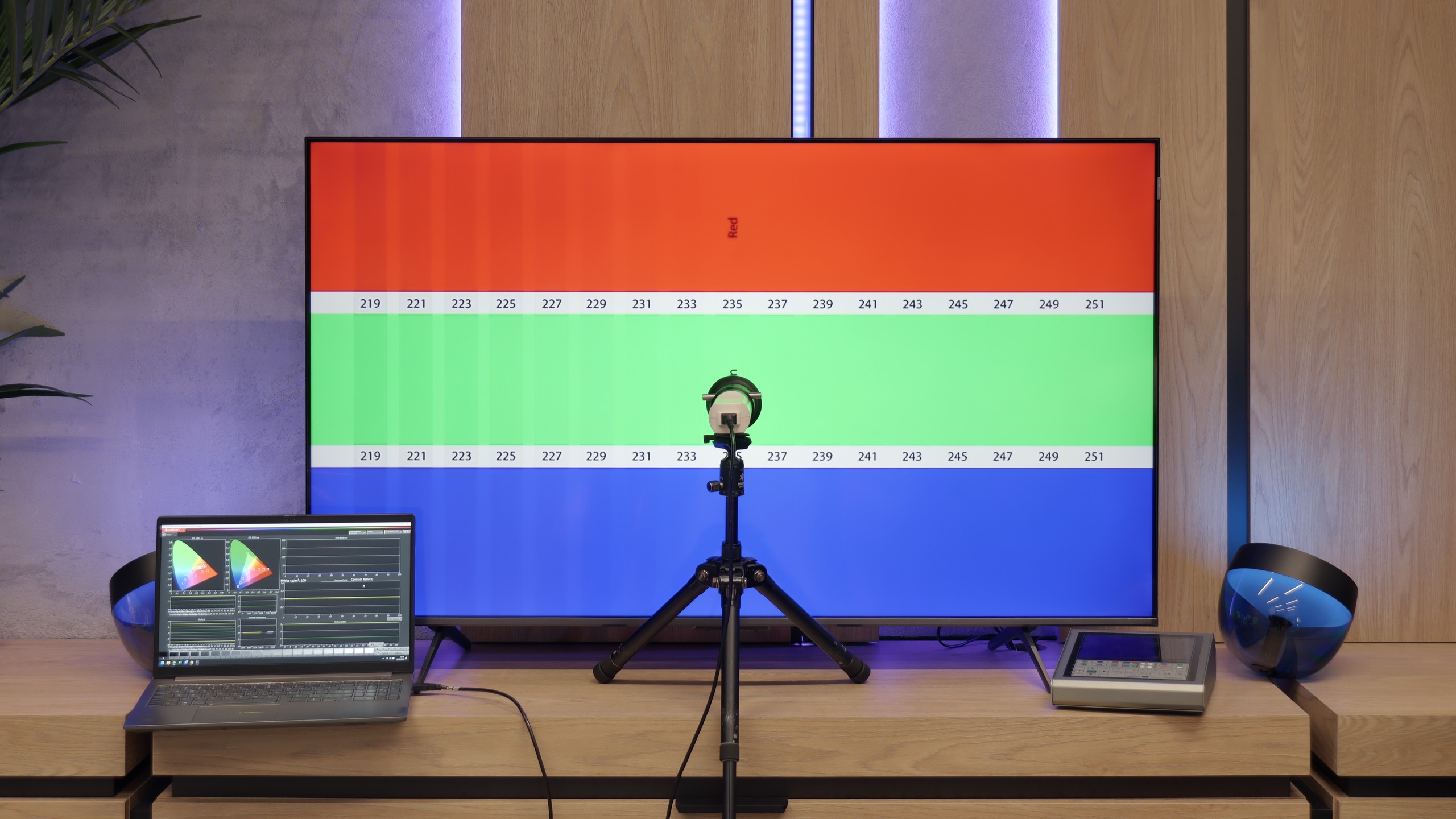
TCL P89K / P8K - Our verdict
6.6
Overall rating
The TCL P8K is a TV that immediately wins you over. It seems cheap, supposedly from a lower tier, but it can surprise you. This device shows that you can get a product with character at this price – and it's aimed at a specific group of users. Because let's be honest, the P8K is a television created with gamers in mind. Two HDMI 2.1 ports, VRR support, 4K at 120 Hz, HGiG, and even Dolby Vision in games – it sounds like something that could only recently be found in much more expensive models. Plus, it has a 144 Hz panel and can reach up to 240 Hz on PC. At this price? It's hard not to smile. Then there's Google TV, the system that breathes life into this screen. Everything works intuitively, with access to a huge library of applications and a responsive Google Assistant that actually understands what you're saying – even if you phrase it your way. Of course, it's not the perfect TV. Brightness of around 250–300 nits isn't impressive and probably won't make a mark in a sunny lounge. But just add an evening, a movie, and a bit of darker surroundings, and you'll find that this screen can do a lot. Thanks to dynamic tone mapping, the P8K handles HDR surprisingly well, and colours can look natural. In film scenes, there's no sign of a plastic, overexposed image – it's just pleasant. Let's not pretend this is a competitor to Mini LEDs or OLEDs – because that's not the point. The P8K / P89K is meant to be a TV that's simply enjoyable to use. And that's where its strength lies. For someone who wants to game, watch Netflix, fire up YouTube, and have it all in one simple device – it's a perfect hit. The TCL P8K shows that "cheap" doesn't have to mean "poor quality". It's a TV with character that doesn't pretend to be premium equipment, yet offers a lot. And maybe that's why it's so easy to like.
Advantages
Good contrast thanks to the VA panel
Google TV system with a huge number of applications
Good motion smoothness. 144Hz panel
Great features for gamers: HDMI 2.1, VRR, 4K@120Hz, HGiG, Dolby Vision in games
Very good colour gamut coverage thanks to the PFS filter (QLED)
Very good compatibility with PC. 240Hz mode
Low input lag – gaming is smooth and responsive
Well-implemented HDR dynamic tone mapping feature. Despite low brightness: HDR content looks surprisingly good.
2.1 sound from Onkyo with a subwoofer – surprisingly good bass
Very attractive price
Disadvantages
Low brightness – around 250–300 nits
Very poor viewing angles
Average digital image processing
Incorrectly implemented Dolby Vision mode
System errors and cuts occur
Not very loud sound, volume limiter is active
Movies and series in UHD quality
6.1
Classic TV, YouTube
6.0
Sports broadcasts (TV and apps)
6.1
Gaming on console
8.1
TV as a computer monitor
8.6
Watching in bright light
4.6
Utility functions
7.4
Apps
9.6
Sound quality
6.7
Complete the survey to find out what fits your preferences
TCL P89K / P8K - Competing TVs in this price range
TCL P89K / P8K - TV appearance
HDMI inputs: 2 x HDMI 2.0, 2 x HDMI 2.1 (48Gbps) Outputs: Toslink (Optical audio), eARC (HDMI), ARC (HDMI) Network Interfaces: Wi-Fi 2.4GHz, Wi-Fi 5GHz, Ethernet (LAN) 100Mbps, Ethernet (LAN) 1Gbit
Build quality: Average
Stand type: Legs
Bezel color: Graphite
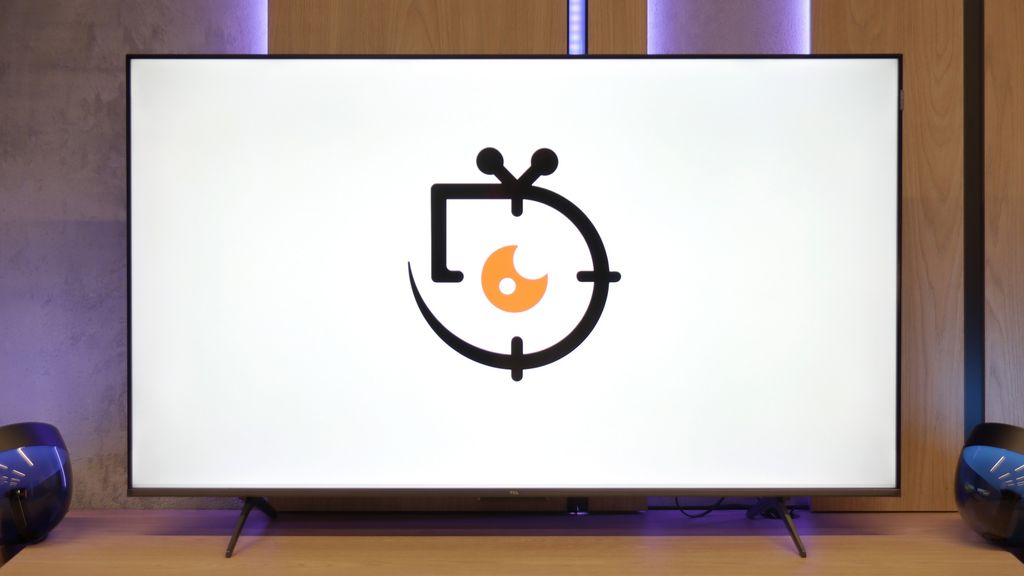
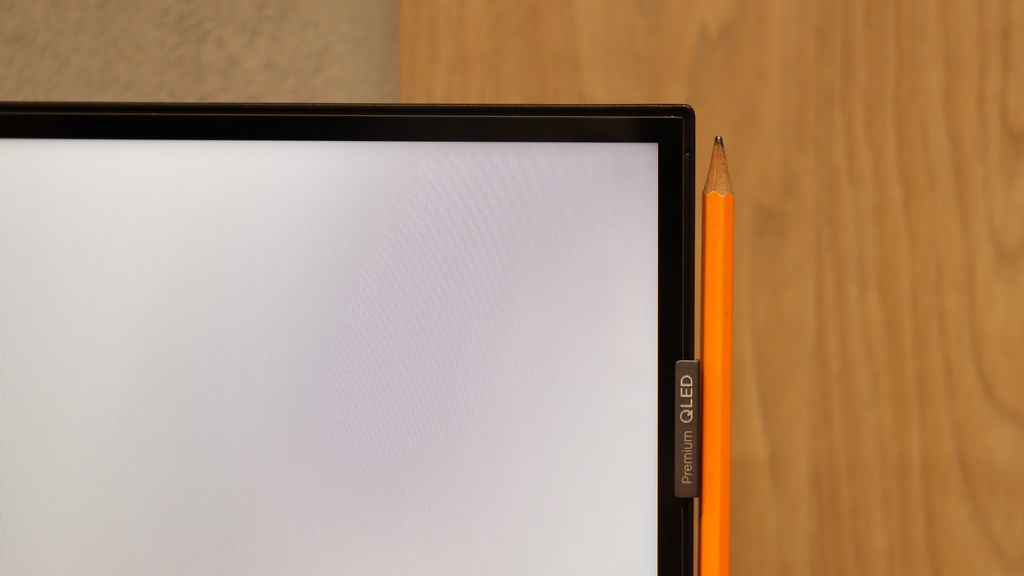
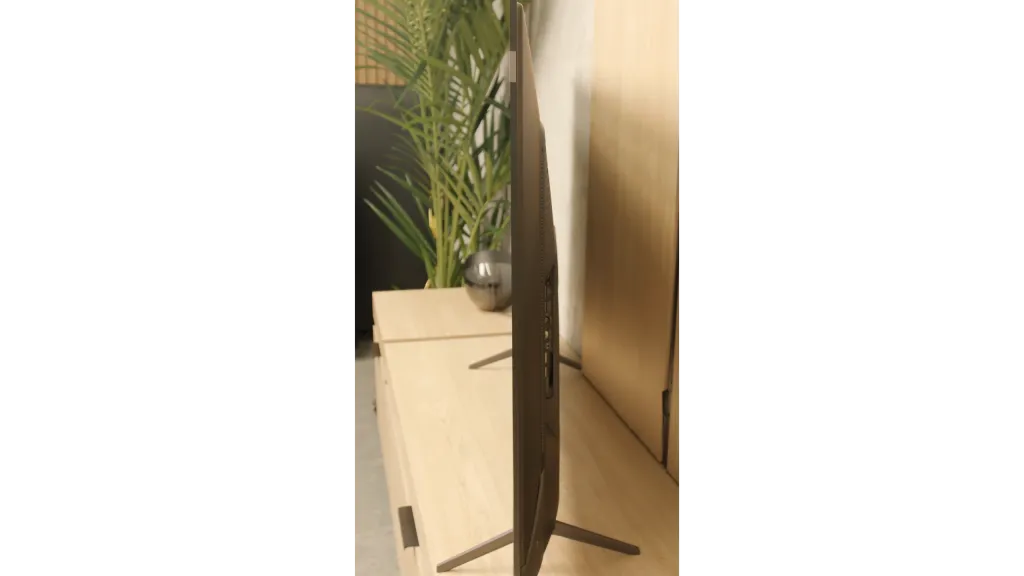
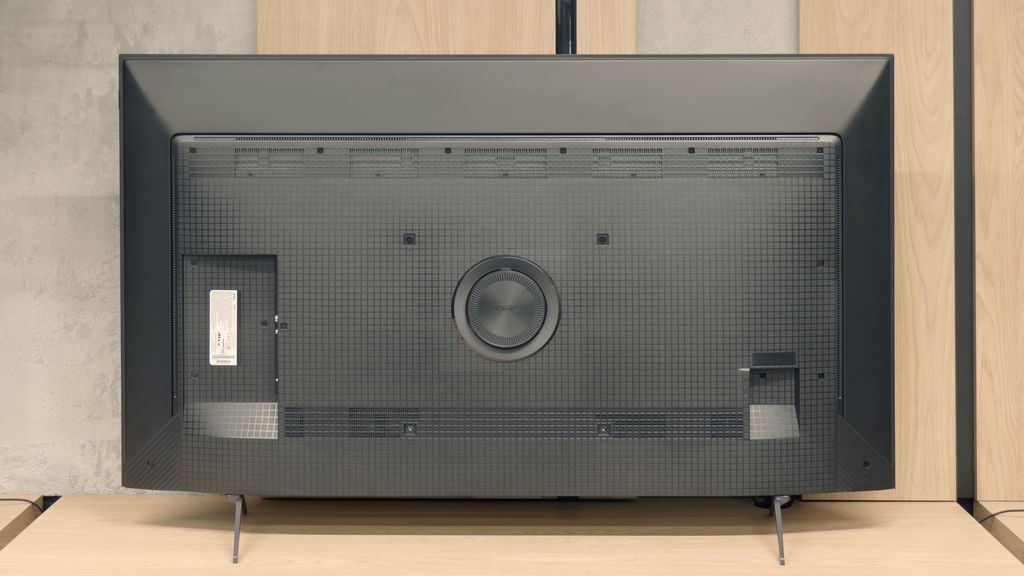
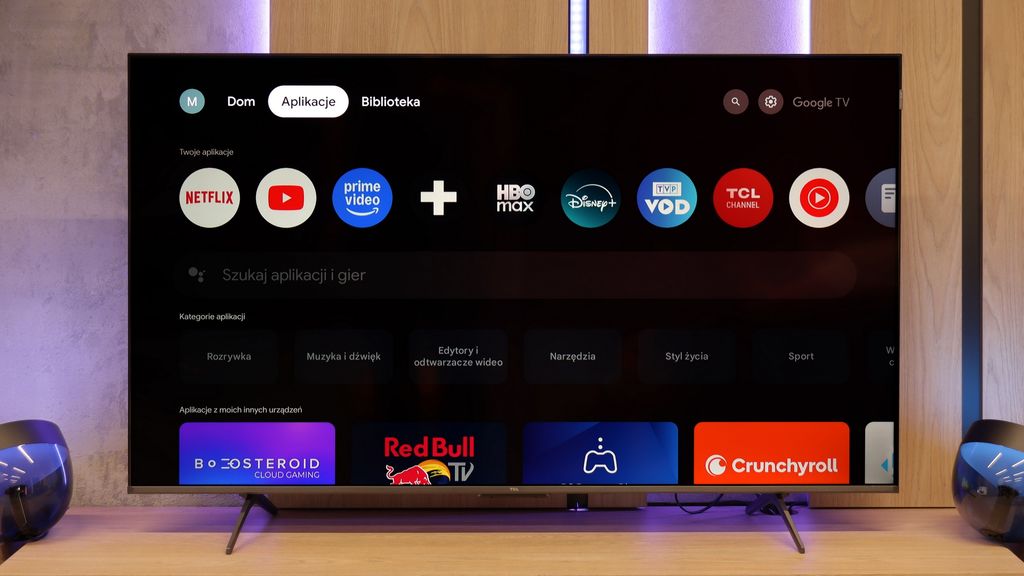
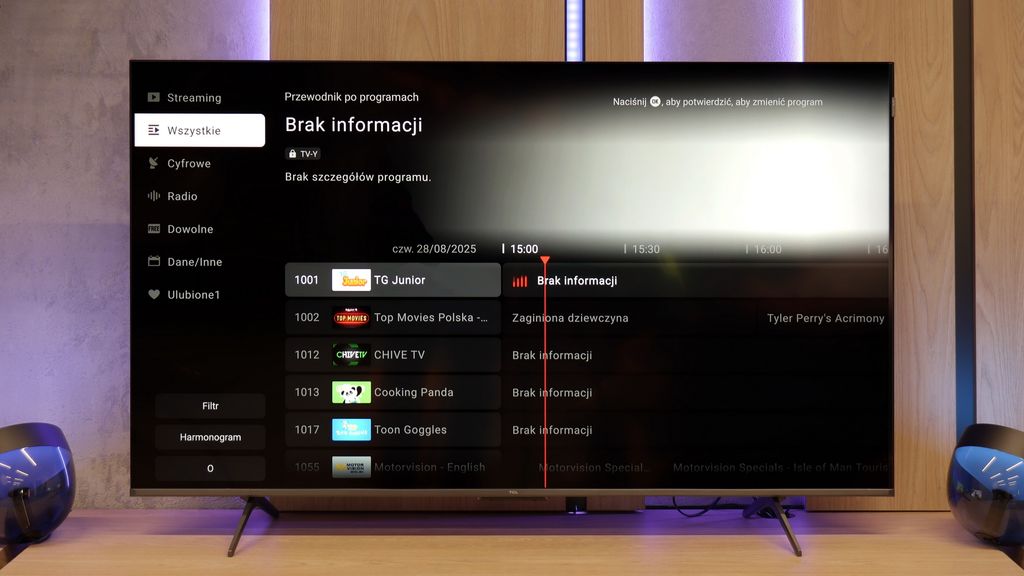
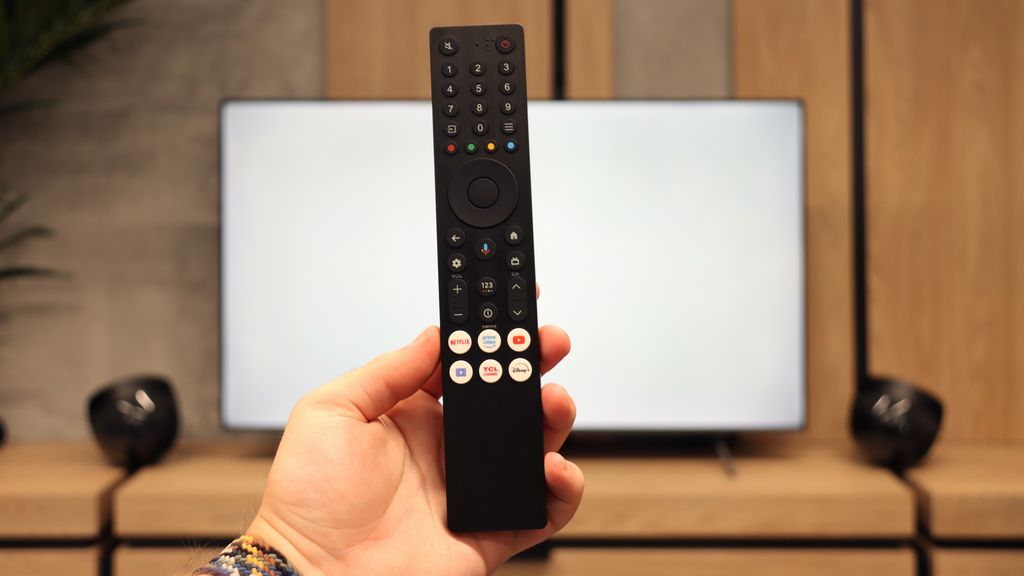
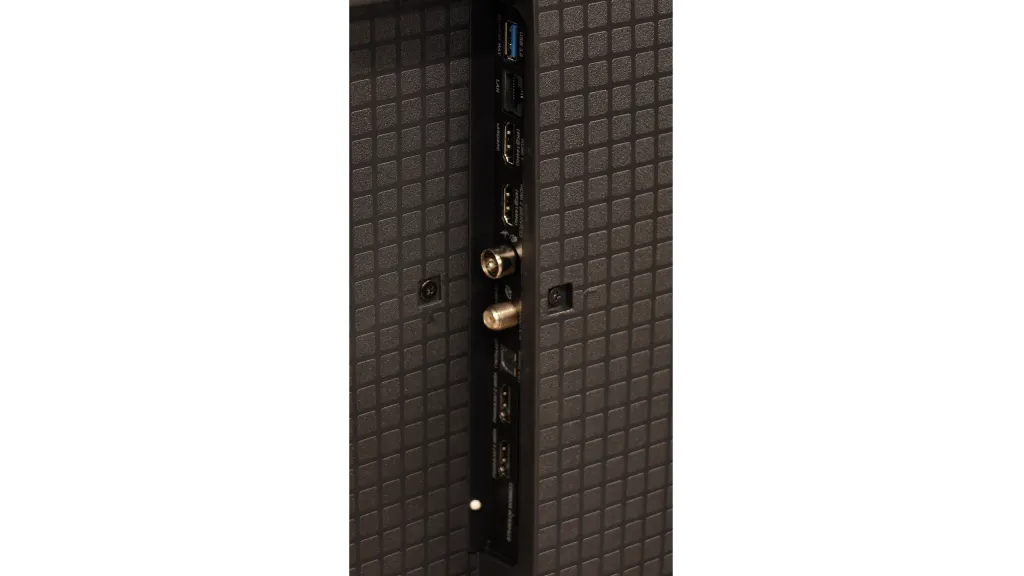
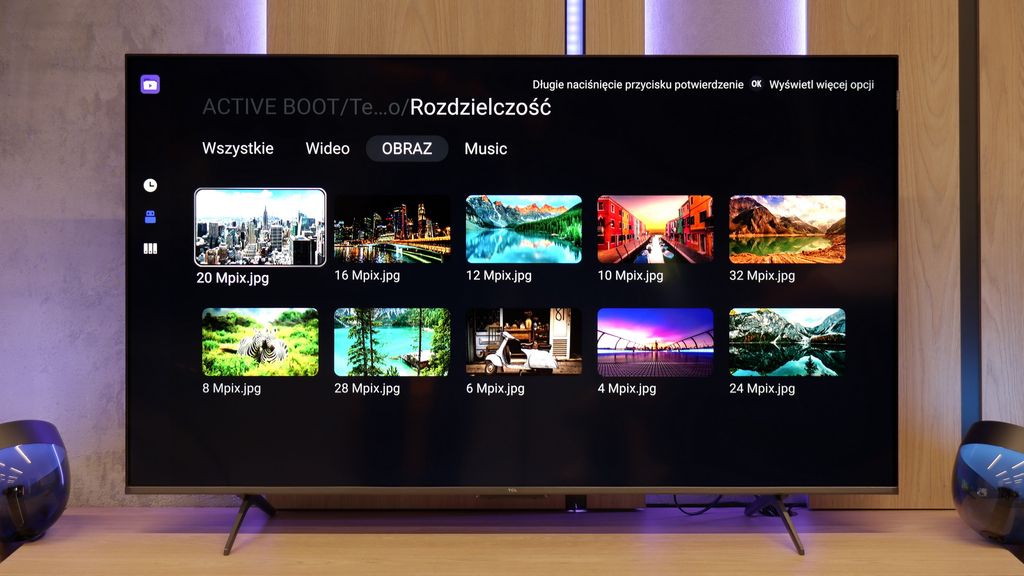
Stand: Fixed
Flat design: No
Accessories: Stand
In terms of appearance, the TCL P8K doesn't particularly stand out against its competitors – it's more of a typical representative of the affordable TV segment. It's not excessively slim, and the design reveals some compromises that the manufacturer had to make to maintain an attractive price. Nevertheless, there are a few nice touches. The screen has a characteristic "borderless" form, which is so popular in current models, always adding a touch of elegance to the device. An interesting detail is the small plate with the inscription "Premium QLED" placed in the right corner – a subtle stylistic move that aims to introduce a hint of prestige. At the back, in addition to quite hefty plastic backing, there's a sizeable subwoofer branded with Onkyo, which is a pleasant surprise in this price range. Overall impression? It looks quite good, though it's hard not to notice that it's a model from the lower tier, although it aspires to a slightly higher class.
Buy at the best price
Select size:
TCL P89K / P8K - Contrast and black detail
5.5/10
Local dimming function: No

Result
5,650:1

Result
3,950:1

Result
5,700:1

Result
5,450:1

Result
2,600:1
Visibility of details in the lights:
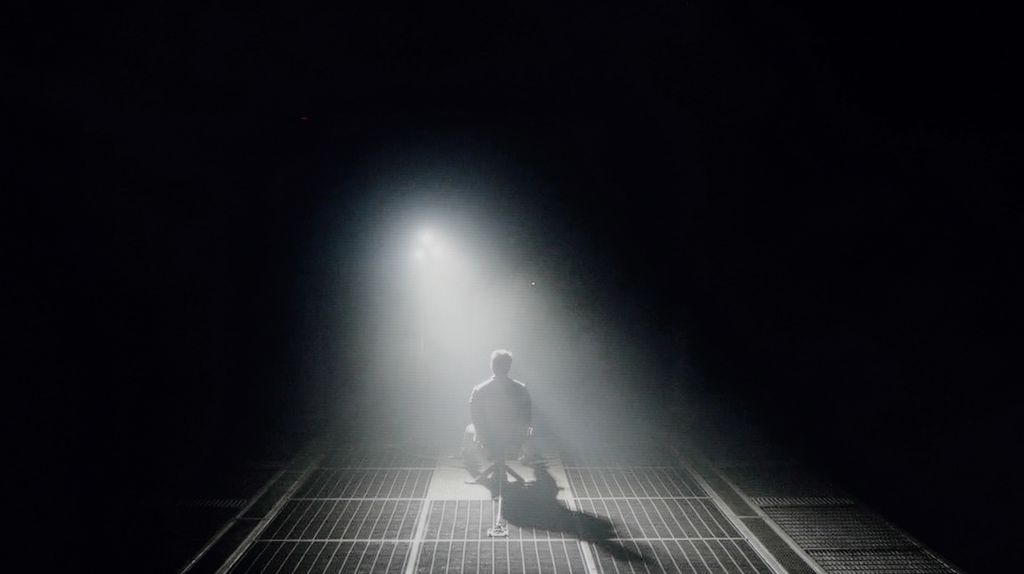
TCL P8K is an example of a television that shows that even in the lower range, you can still find solid contrast. The VA panel does a really good job here – a measurement around 6000:1 may not sound impressive, but in real scenes, it creates an effect that is simply pleasing to the eye. In the darkness of the forest in “The Revenant” or in the futuristic scenes of “Oblivion,” you can see depth and light separation that’s hard to expect from equipment at this price. The P8K can render darkness without the feeling that everything is drowning in grey. The Direct LED backlighting also works in its favour. Of course, there is no local dimming here, but the system can dim the whole screen when the scene requires it or slightly brighten it to bring out details in the bright areas. It's a somewhat analogue approach to contrast – simple but effective. This was well demonstrated on the test pattern from the legendary Pioneer Kuro: the television prioritised bright points, while the background lost some depth, yet it still retained a decent appearance. Of course, there is no perfectly jet-black here. In a dark room, you can see that the black leans towards navy, but despite that, the overall presentation is just good. In normal home conditions, the contrast is more than enough to feel the cinematic atmosphere.
TCL P89K / P8K - HDR effect quality
4.5/10
Supported formats: HDR10, HDR10+, Dolby Vision, HLG Color gamut coverage: DCI P3: 93.6%, Bt.2020: 70.4%
Luminance measurements in HDR:

Result
207 nit

Result
238 nit

Result
313 nit

Result
251 nit

Result
299 nit
The maximum brightness of the TCL P8K peaks at around 300 nits, although in real film scenes the television typically maintains closer to 250 nits. These are values that cannot be considered sufficient to achieve a true HDR effect – they are more aligned with a solid base for SDR content. Therefore, we won’t see spectacular flashes, bursts of light, or moments where the screen actually “blinds” as is the case with more expensive models. The image is consequently a bit flat, and the differences between light and shadow – more symbolic than realistic. Fortunately, TCL has a few aces up its sleeve that save the overall impression. One of these is the coverage of the DCI-P3 colour gamut at around 93-94%. Thanks to an additional QLED layer (PFS LED), colours gain depth and intensity, clearly surpassing standard LCD panels. As a result, while the typical “wow effect” associated with HDR brightness is lacking, the image itself can impress with its richness and vibrant tones, making the film scenes pulse with colour and not appear significantly washed out.
Scene from the movie “Pan” (about 2800 nits)

Scene from the movie “Billy Lynn” (about 1100 nits)

We didn't expect wonders from the TCL P8K – after all, it's a TV from the budget range, not a premium segment device. Therefore, our surprise was even greater when, after firing up a few demanding film scenes, it turned out that this unassuming model can do a lot. Although it clearly falls short of the top-tier designs in brightness (which is fully understandable at this price), the image displayed on the screen looks mature and simply enjoyable. We don't have the impression that the bright effects blend into one white blob – on the contrary, the TV retains details in bright areas, and the overall picture is coherent and full of nuances that many devices at twice the price of the P8K would envy. Indeed, one can notice that the black is not always perfect – in darker scenes it can be slightly elevated, because the technology for local dimming is missing here – however, the overall reception remains very positive. The dynamic tone mapping function called "Detailed Priority Description" plays a huge role here. Thanks to this, the TV can maintain a richness of detail and depth in the image, even if it occasionally loses a bit of saturation. The final effect is truly impressive – the P8K can deliver a surprisingly cinematic image that we wouldn't expect from such an affordable model. In this part of the test, the TV deserves applause, as many more expensive devices could blush a bit in comparison.
HDR luminance chart:
HDR luminance
TCL P8K has a very interesting way of handling various HDR formats. As seen in the pictures, the “Priority Detail Description” feature really does a great job here – the image in HDR10 looks simply stunning. You can see depth, detail in highlights and shadows, and everything maintains a natural balance without excessive brightness or loss of contrast. The effect? The image looks mature, at times surprisingly good for this price range. And now the most interesting part – HDR10 performs better here than Dolby Vision. Yes, it sounds strange, but during testing, the difference was clear. Usually, it's Dolby Vision, thanks to dynamic metadata, that can draw the maximum potential from a television, while HDR10 is considered something more basic. In the case of the P8K, it's the opposite. Static HDR10, supported by tone mapping, presents an image that is calm, detailed, and balanced. Dolby Vision, on the other hand, can overdo brightness and lose subtleties, making the image look less natural. This is truly a rare case – a television that handles classic HDR10 better than Dolby Vision. So, it can be said that TCL has somewhat flipped upside down what other models have accustomed us to.
Static HDR10

Dynamic: Dolby Vision

Factory color reproduction
5.4/10
In Filmmaker mode, the TCL P8K revealed certain imperfections in image reproduction from the start. We noticed that the TV had a tendency to slightly brighten scenes – its gamma was somewhat lowered, which made the image appear softly "washed out," lacking depth, as if the contrast had slipped out of control. This was most noticeable in HDR content, where the EOTF brightness curve clearly deviated from reference values. As a result, darker areas of the image looked too gloomy, and brighter ones did not always reach the correct level of luminance. The second noticeable issue was a slight blue overdrive – the TV stubbornly boosted this colour, causing some parts of the image, especially skin tones and reds, to have a slight purple tint. It is not a major flaw, but to a discerning eye – noticeable. Fortunately, most of these errors could be adjusted during calibration. You can see the results of this calibration in the charts and photos below.
Color reproduction after calibration
7.5/10
After calibration, the TCL P8K revealed a completely different side. It managed to achieve nearly perfect, even reference-level colour reproduction for both SDR and HDR content. The screen no longer had a tendency towards a cool tint, and the white balance was perfectly aligned. The gamma values for SDR materials finally look as they should – the image has the right depth and no longer appears washed out. The only concern that can still be raised about the P8K pertains to its "Chinese" traits, known from most TCL models. The TV still likes to manipulate saturation in HDR content in its own way – sometimes it gently boosts it, other times it smooths it out, making the effect not always fully predictable. Nevertheless, after calibration, the colours look stunning, and their accuracy is truly impressive. In most cases, measurement errors dropped below values of 1–2, which is a performance that much more expensive models would not be ashamed of.


TCL P89K / P8K - Smoothness of tonal transitions
9.1/10
The television excels at colour blending – gradients are smooth, free from visible bands or unpleasant jumps. This is best seen in classic test scenes, like shots from the film Kingsman or The Martian, where most televisions reveal their weaknesses. The P8K maintains consistency and subtlety of hues, creating an image that is pleasant and natural to behold.
Minor imperfections only emerge in extremely dark shades or on grey palettes – this is the point at which even significantly more expensive models start to struggle. However, in everyday viewing, this is of no consequence. Overall, the TCL P8K does an outstanding job of colour blending, offering an image that is fluid, harmonious, and free from artifacts.








Image scaling and smoothness of tonal transitions
6/10
Smooth transition function
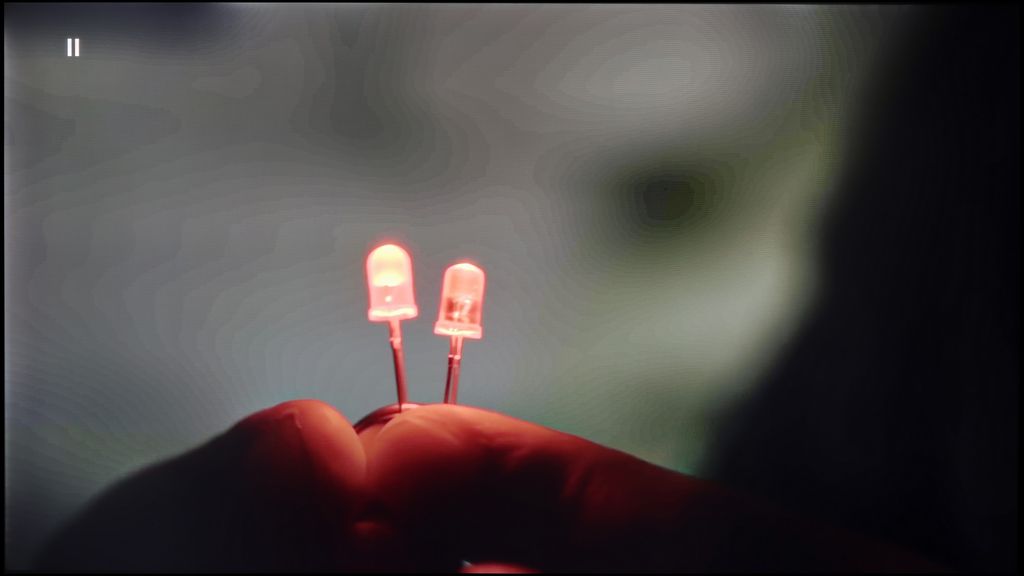
Image without overscan on the SD signal

The TCL P8K performs somewhat weaker when it comes to the fluidity of tonal transitions in lower quality materials. The television does offer a feature to smooth out unwanted bands, but its effectiveness leaves a lot to be desired. Even at the highest setting, it's hard to speak of a real improvement—at times, the effect is even opposite to what was intended, as the feature can introduce small artifacts and unnatural blurring on the screen.
On the other hand, the upscaling, which involves scaling the image to 4K resolution, looks definitely better. The P8K handles this task surprisingly well—HD content, and even SD, is enhanced in an aesthetically pleasing way without excessive loss of sharpness. There are indeed slight “hard” edges typical of this class of equipment, but this can be easily adjusted using the sharpness slider according to personal preferences. The final effect is more than satisfying, especially considering the price range this model is in.
TCL P89K / P8K - Blur and motion smoothness
7.1/10
Maximum refresh rate of the panel: 144Hz
Film motion smoothing option: Yes
Blur reduction option: Yes
BFI function 60Hz: No
BFI function 120Hz: No
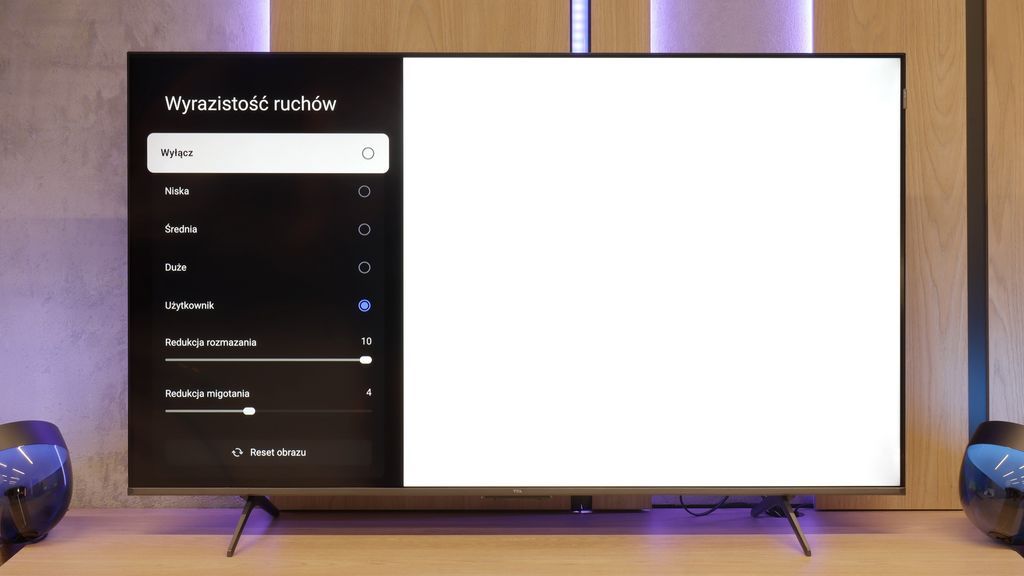
TCL P8K is one of the cheapest televisions offering a 144 Hz refresh rate, which in itself is a significant advantage in this price segment. Thanks to the fast panel, this model can confidently be recommended to both sports fans and gamers – the image is smooth, and the movements of the ball or dynamic actions look natural. However, this does not mean that the P8K is suitable only for sports. On the contrary – it can also maintain the right dynamics in movies without introducing an artificial 'theatrical' effect, as long as the settings are adjusted thoughtfully. The television is equipped with a motion smoother called 'Motion Clarity', which features two sliders: blur reduction and flicker reduction. The first is responsible for smoothing the image by generating additional frames, which increases fluidity but can cause a slight soap opera effect. The second, on the other hand, reduces flicker and improves sharpness in motion, although it may slightly dim the screen. Properly adjusting these two parameters allows for a truly good balance between natural motion and fluidity. The 60 Hz screen is good for dynamic content, though more discerning users will notice that it is not a top-tier panel in terms of motion clarity.
Blur (native resolution, maximum refresh rate):



Blur (4K@144Hz):



When it comes to motion blur – here the P8K performs rather average. In the UFO test, clear trails behind the object were visible, indicating certain limitations of the panel. The image is certainly much clearer than on 60 Hz panels, but it's hard to say that it's a top-tier panel when it comes to response speed. It will work well for dynamic content, though more demanding users will notice that it's not a high-end screen in terms of movement clarity.
TCL P89K / P8K - Console compatibility and gaming features
9.8/10
ALLM: Yes
VRR: Yes
VRR range: 48 - 240Hz
Dolby Vision Game Mode: Yes
Correct implementation of HGIG: Yes
1080p@120Hz: Yes
1440p@120Hz: Yes
4K@120Hz: Yes
Game bar: Yes
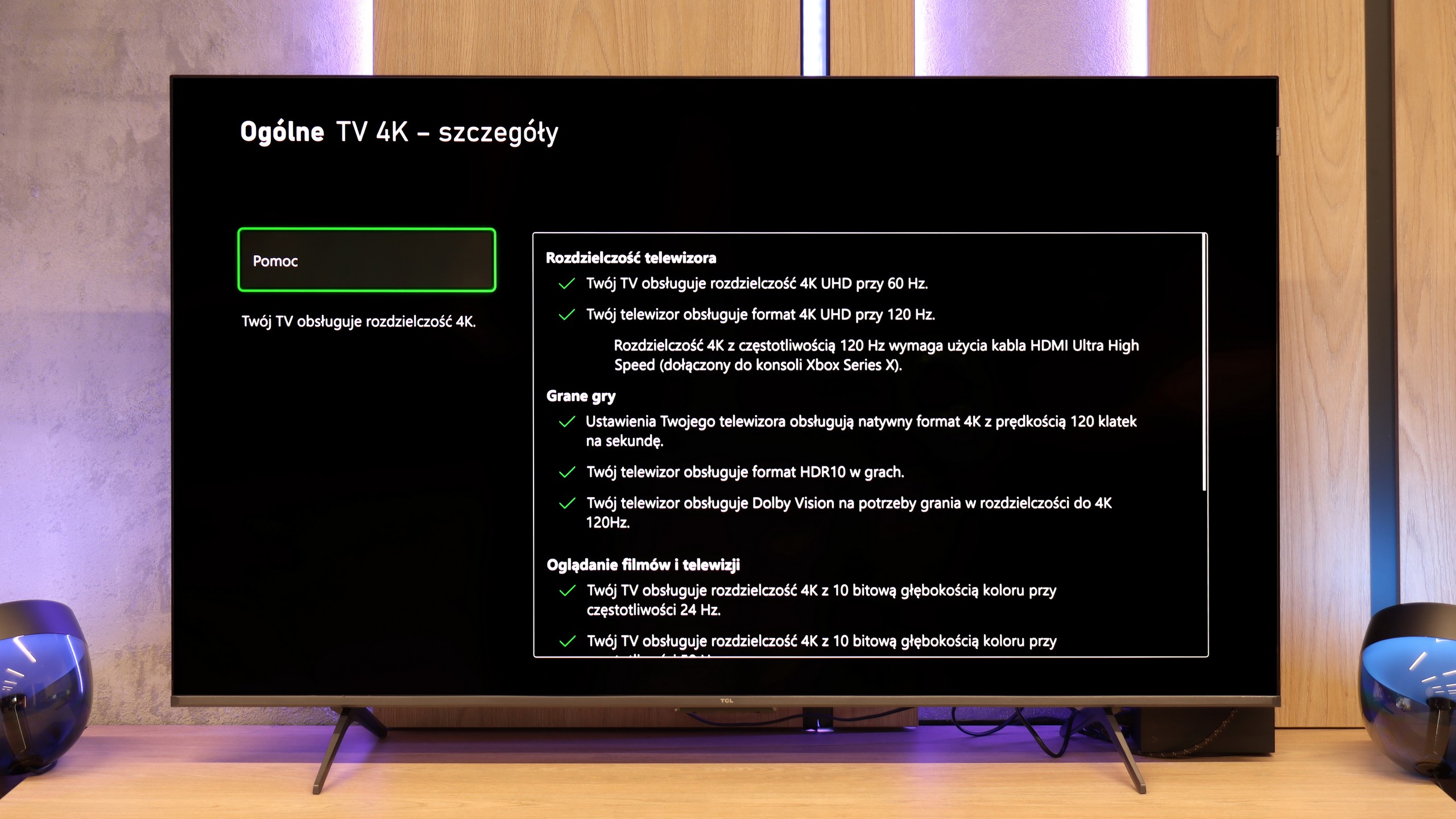
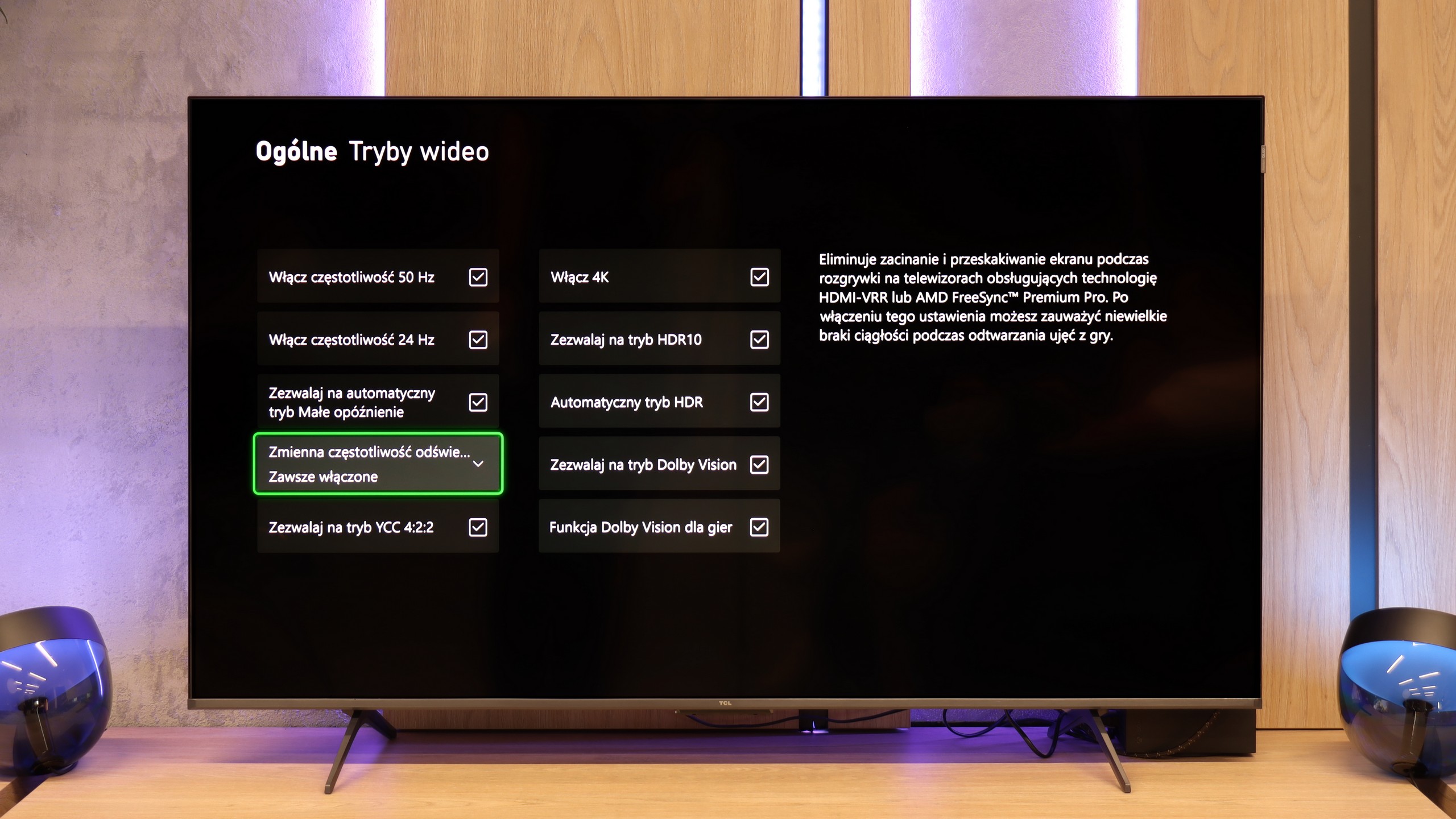
Although the TCL P8K is a budget television, it absolutely cannot be said that it is unsuitable for gaming. On the contrary – this screen can pleasantly surprise any gamer. On board, we find two HDMI 2.1 ports, which allow us to effortlessly send a 4K image at 120 Hz. If someone plays on PC, they will also be pleased to know that the television can operate even with a refresh rate of 240 Hz at a lower resolution – a small thing, but it’s appreciated. Additionally, there is a full set of gaming-specific features: automatic game mode, a Game Bar with quick parameter previews, VRR, HGiG, and support for Dolby Vision in games. All of this makes gaming on the P8K a truly enjoyable experience – the image is smooth, the response is quick, and the television works well with next-gen consoles. The TCL P8K shows that a cheap screen doesn't have to mean giving up on fun. Definitely not when it comes to gaming.
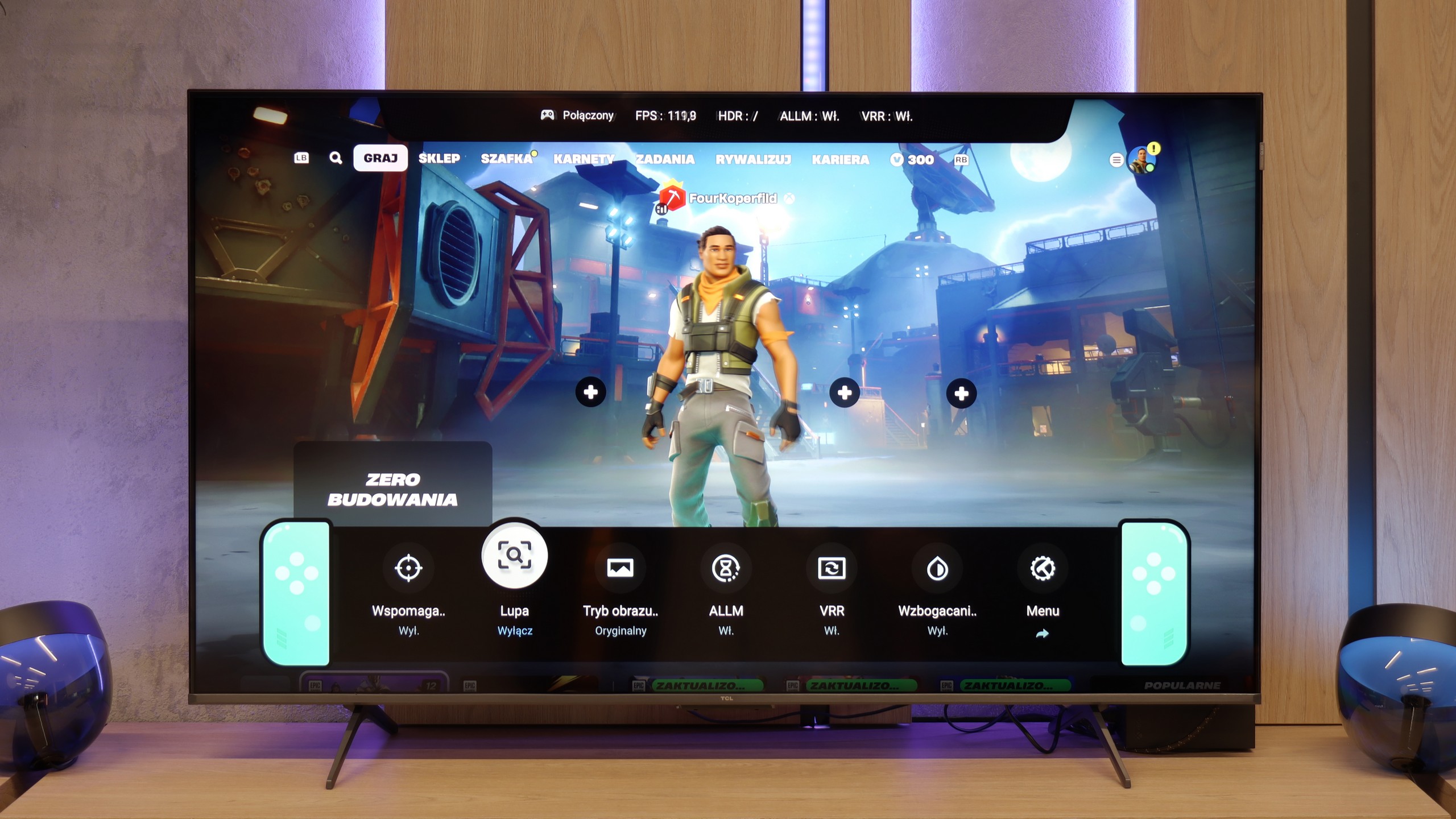
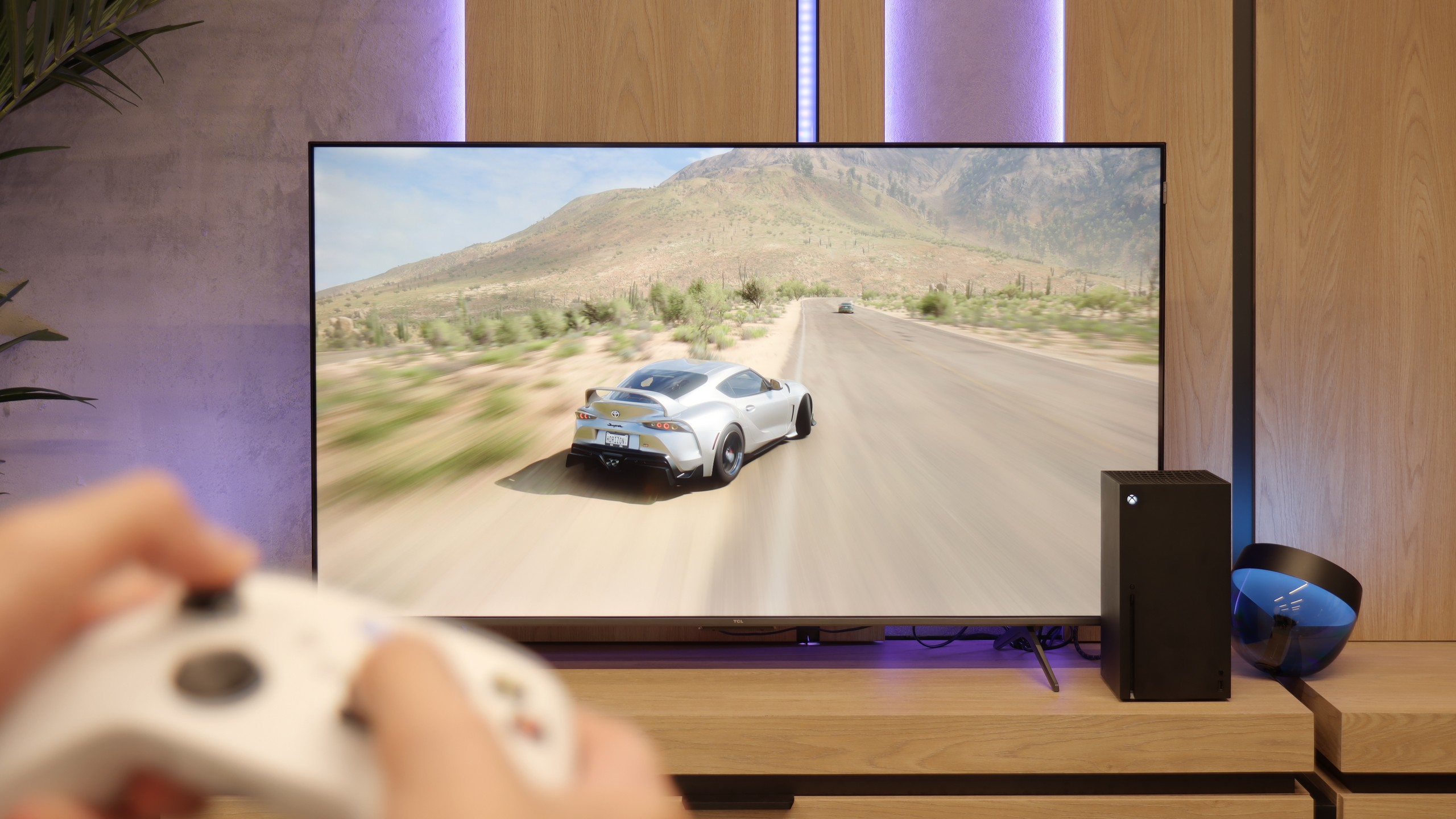

TCL P89K / P8K - Input lag
9.5/10
In terms of delays, the TCL P8K performs quite well. In game mode at 4K and 60 Hz, the input lag is about 22 ms, and at 4K and 120 Hz, it drops to 13 ms. These values make the TV respond quickly and there's no noticeable "lag" between the controller and the screen.
| SDR | HDR | Dolby Vision |
|---|---|---|
| 1080p60: 22 ms | 2160p60: 19 ms | 2160p60 DV: 20 ms |
| 1080p120: 13 ms | 2160p120: 10 ms | |
| 2160p60: 22 ms | ||
| 2160p120: 13 ms |

TCL P89K / P8K - Compatibility with PC
8.6/10
Chroma 444 (maximum resolution and refresh rate): Yes
Font clarity: Very Good
Readability of dark text and shapes: Good
Input lag in PC mode (4K, maximum refresh rate): 13ms
Matrix subpixel arrangement: BGR
Max refresh rate: 144Hz
G-Sync: Yes
The TCL P8K also performs excellently as a computer monitor. The readability of fonts is at a very good level, and working with documents or browsing the web is simply comfortable. The only minor downside occurs at a 144 Hz refresh rate in 4K – dark text on a light background can slightly lose sharpness. The problem disappears when switching to 120 Hz, so it's worth keeping that in mind for everyday use. Besides, it's not just a work screen, but also a fantastic monitor for gamers. The 144 Hz refresh rate (and even 280 Hz at a lower resolution) combined with G-Sync synchronisation guarantees very smooth gameplay. Of course, we will fully appreciate its capabilities only with a suitably powerful computer, but the potential of the P8K in this role is really significant.
TCL P89K / P8K - Viewing angles
2.8/10
Brightness drop at an angle of 45 degrees: 86%
The Achilles' heel of the TCL P8K is undoubtedly its viewing angles. The VA panel used has its advantages in terms of solid contrast, but unfortunately, it suffers significantly when viewed from the side. Colours clearly fade, saturation drops, and the overall image takes on a cooler, washed-out tone. In practice, this means that the best picture is achieved when sitting directly in front – any significant deviation results in a noticeable loss of quality.
TCL P89K / P8K - Daytime performance
4.6/10
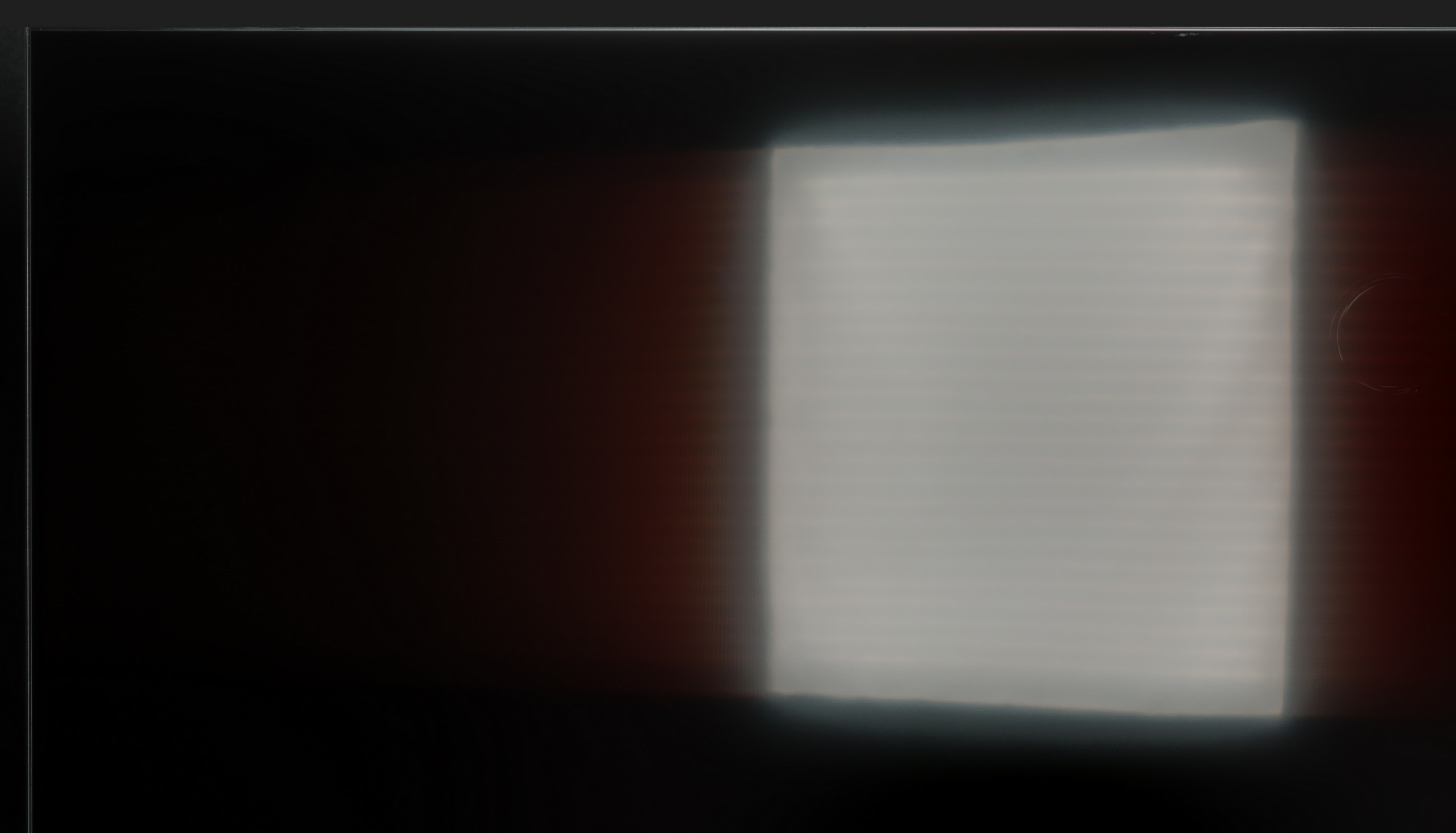

Panel finish: Satin
Reflection suppression: Decent
Black levels during daytime: Good
TCL P8K isn't a fan of bright sunlight. With a brightness level of around 300 cd/m², it’s hard to expect it to perform well in a lounge with large windows and no blinds. In such conditions, the image loses some clarity, and darker scenes can vanish in light reflections. Fortunately, the screen has a satin finish that handles reflections well and saves the day in typical home conditions. In the evening or in a slightly dimmed room, the TV looks quite good. It’s just not the kind of equipment that likes to stand in front of a south-facing window.
Panel brightness
Average luminance SDR
TCL P89K / TCL P8K: 299 cd/m2
TCL P89K / P8K - TV features
7.4/10
System: Google TV
System performance: Decent
- HDMI inputs: 2 x HDMI 2.0, 2 x HDMI 2.1 48Gbps
- Outputs: Toslink (Optical audio), eARC (HDMI), ARC (HDMI)
- Network Interfaces: Wi-Fi 2.4GHz, Wi-Fi 5GHz, Ethernet (LAN) 100Mbps, Ethernet (LAN) 1Gbit
- TV reception: DVB-T, DVB-T2, DVB-S, DVB-S2, DVB-C
Classic features:
Recording to USB (terrestrial TV): No
Recording programming: No
Picture in Picture (PiP): No
RF remote control (no need to aim at the screen): RF
Backlit remote control: No
Teletext: No
Audio only mode: Yes
Bluetooth headphones support: Yes
Simultaneous Bluetooth headphones & TV audio: Yes
Smart features:
AirPlay: Yes
Screen mirroring (Windows Miracast): Yes
Voice search: Yes
Voice search in native language: Yes
Ability to connect a keyboard and mouse: Yes








SmartTV: Google TV
TCL P8K operates on the Google TV system, which is the heart of the entire device. This is where we see the biggest advantage of this model over many competitors in a similar price range. The system is clear and easy to use, and very well optimized. We can easily use the screen mirroring feature or the built-in Chromecast, which allows you to quickly stream content from your phone to the large screen. However, the biggest asset is the Google Assistant, which responds promptly and truly understands commands – even those that are not precisely articulated. Moreover, the app library on Google TV is a real treasure – you can install practically anything, from major VOD platforms to lesser-known music or sports applications.
Classic functions
When it comes to classic TV functions, the P8K doesn’t have much to boast about. The remote is simple and comfortable, with a large number of buttons, and the presence of Bluetooth allows you to connect wireless headphones or speakers. And that’s pretty much where the list of conveniences ends. You won’t find USB recording, PiP functions, or even a working teletext here. TCL has clearly focused on modern content and internet features, rather than classic solutions known from older receivers. This TV is meant to shine in the world of apps and streaming – and it does exactly that.
Sound connection options
HDMI audio:
Other audio outputs:
Toslink: Yes
Wireless audio:
Bluetooth: Yes
Supported audio formats (external HDMI eARC audio):
Dolby Digital Plus 7.1: Yes
Dolby True HD 7.1: No
Dolby Atmos in Dolby Digital Plus (JOC): Yes
Dolby Atmos in Dolby True HD: No
DTS:X in DTS-HD MA: Yes
DTS-HD Master Audio: Yes
Senior accessibility
Numeric keyboard on TV: Yes
Font size adjustment: No
Audio description: Yes
TCL P89K / P8K - Apps
9.6/10























TCL P89K / P8K - Playing files from USB
8.9/10

| Maximum photo resolution: | Supported photo formats: |
|---|---|
Playing files from USB on the TCL P8K performs quite decently. The television handles most popular video formats without any issues, as well as subtitles and audio files. Problems may arise only with less common codecs or unusual file containers that the built-in player simply doesn't recognise. Fortunately, in the case of Google TV, this isn't a problem – within a few moments, you can download an external player like VLC, MX Player, or Kodi, and the issue disappears.
TCL P89K / P8K - Sound
6.7/10
80dB
Maximum volume
Supported codecs
(TV speakers)
Dolby Digital Plus 7.1
Dolby True HD 7.1
Dolby Atmos in Dolby Digital Plus (JOC)
Dolby Atmos in Dolby True HD
DTS:X in DTS-HD MA
DTS-HD Master Audio
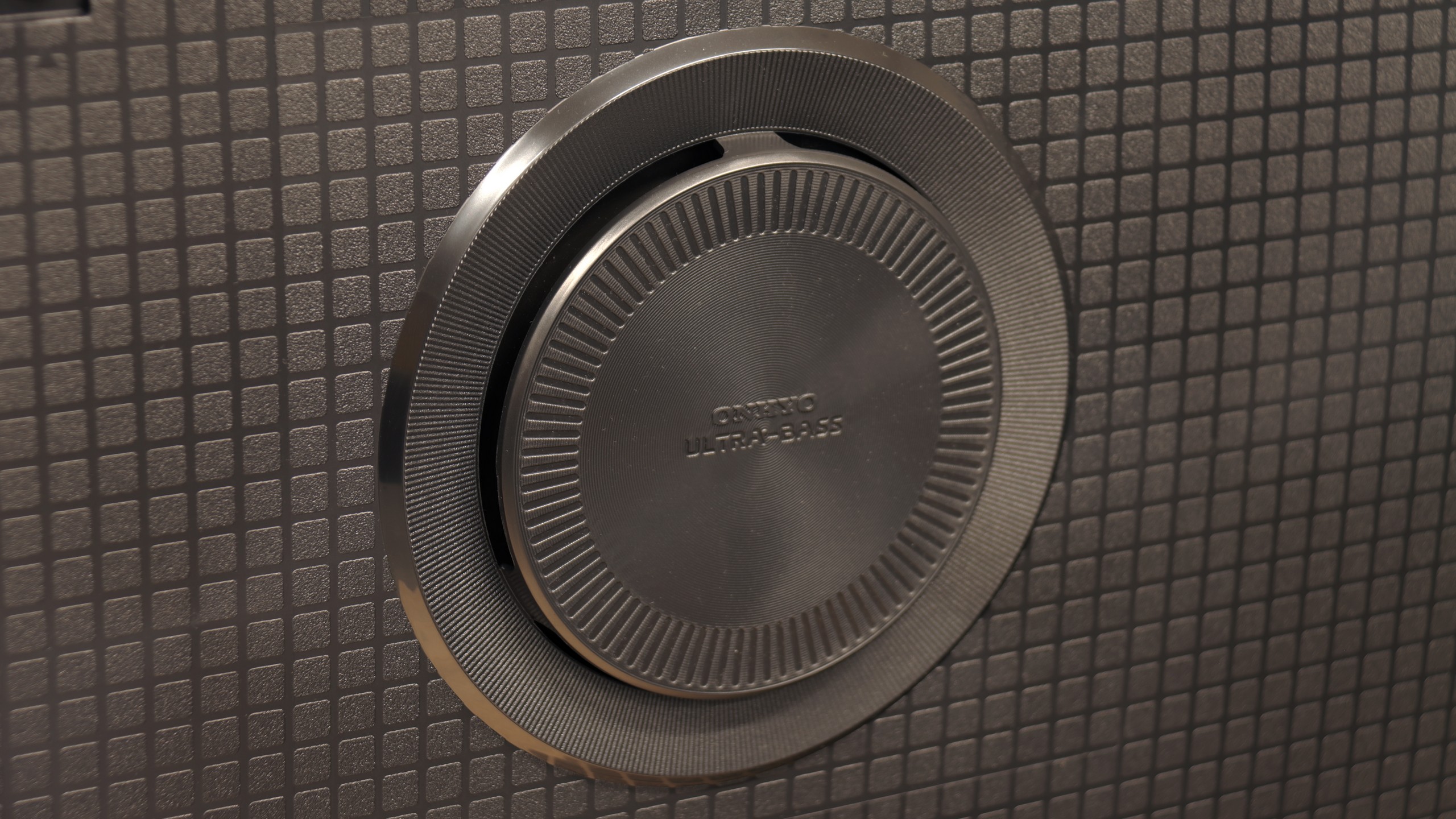
For a television in this price range, the TCL P8K can really surprise with its sound. The 2.1 system featuring Onkyo, along with the subwoofer located at the back of the unit, offers surprisingly pleasant, rich bass and quite a wide soundstage. The audio is warm, and with the right material, you can even get the impression that the sound gains depth and character – something rarely expected from a television at this price. It actually performs quite well for music. However, it's not perfect. The P8K is not one of the particularly loud televisions – during testing, we noticed a strange tendency to automatically lower the volume, even with the volume slider set to maximum. It seems like some internal limiter is at work, presumably to protect the speakers (or our ears). It's a shame because there's significant potential in this set, and without that limitation, the sound could be even fuller.
Acoustic Measurements
80dBC (Max)
75dBC
TCL P89K / P8K - Panel details
Software version during testing: V8-0012T01-LF1V538.002459
Image processor: MT5896 2,5GB RAM
Subpixel Structure:
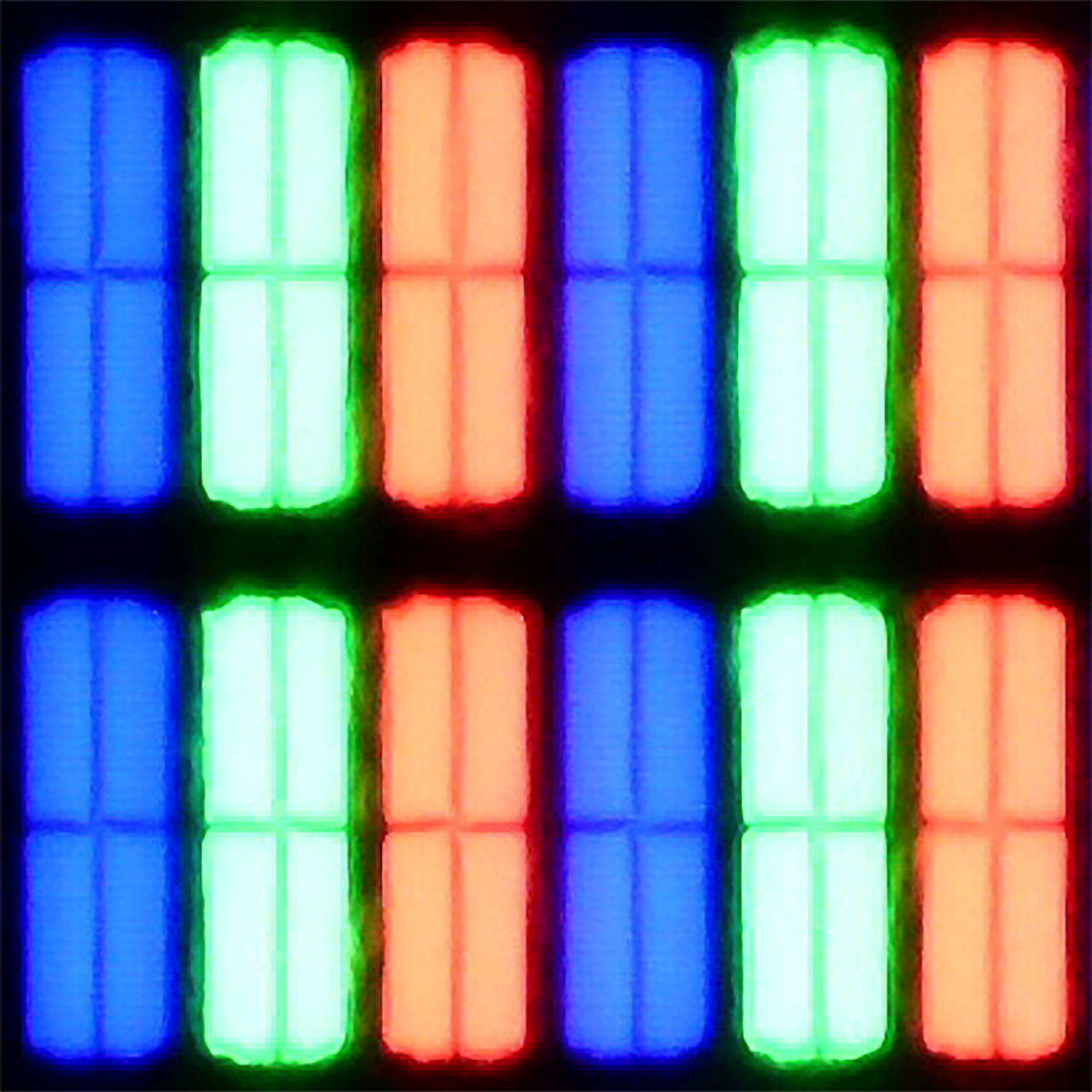
Panel uniformity and thermal imaging:
Backlight Type: PFS LED

Founder and originator of the "ChooseTV" portal

Journalist, reviewer, and columnist for the "ChooseTV" portal
See articles related to TCL P89K / TCL P8K:
5/13/2025

